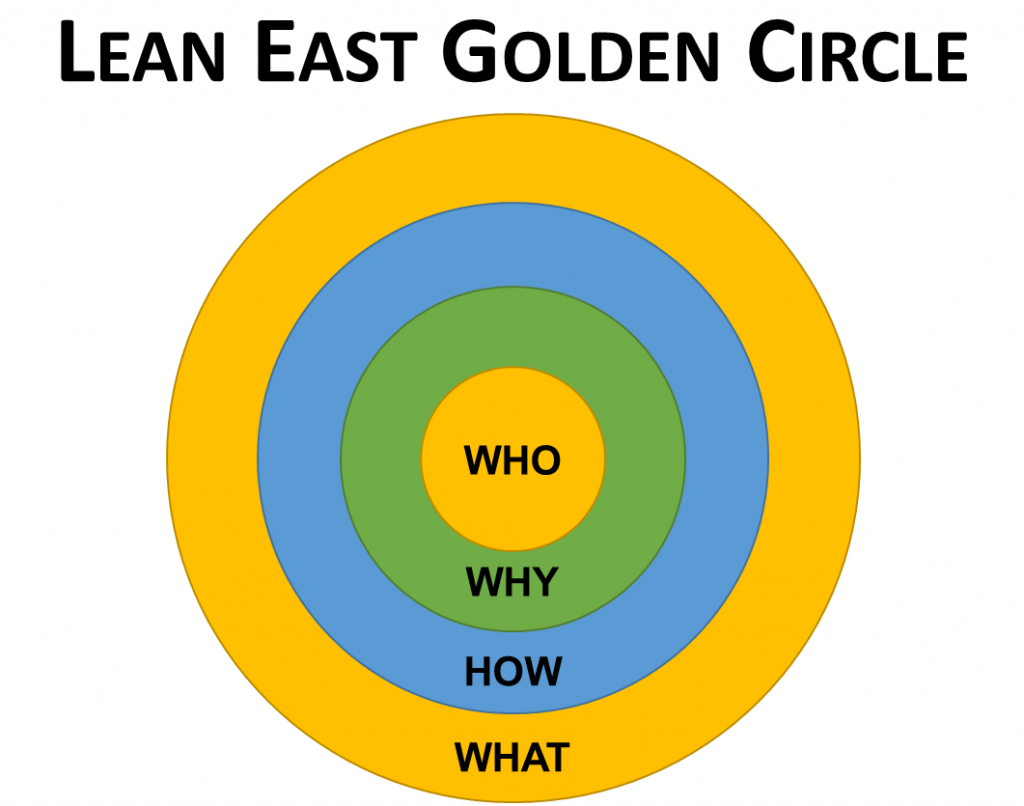This month we discuss the 2009 book Start with Why: How Great Leaders Inspire Everyone to Take Action by Simon Sinek. In this favorite book of many leaders, Sinek asks why some companies are able to achieve things that defy all the assumptions. For example, why is Apple so innovative? Why did the Wright Brothers achieve flight before their better funded, better-qualified competition? Sinek believes that the great and inspiring leaders and organizations all think, act and communicate in the same way – and it is the opposite of everyone else.
All leaders and organizations know WHAT they do (the product or service) and some know HOW they do it (the “differentiating value proposition,” “proprietary process” or “unique selling proposition.”) Very few companies can clearly articulate WHY they do WHAT they do. But not the inspired leaders; every one of them thinks, acts and communicates from the inside out.
“People don’t buy WHAT you do, they buy WHY you do it.”
A marketing message from Apple, if they were like everyone else, might start like this:
We make great computers.
They’re beautifully designed, simple to use, and user-friendly.
Wanna buy one?
It’s not a very compelling sales pitch, but this is how most companies sell. Here is what we do, here is how we are different and better, now buy from us. Here is the way Apple actually communicates:
Everything we do, we believe in challenging the status quo. We believe in thinking differently.
The way we challenge the status quo is by making our products beautifully designed, simple to use, and user-friendly.
And we happen to make great computers.
Wanna buy one?
This message feels different. We’re much more eager to buy a computer from Apple after reading the second version.
Start with Why
Great leaders begin with WHY. Simon shares his simple concept of the Golden Circle, with WHY in the middle, then HOW and finally WHAT on the edge. The WHAT corresponds to our rational and analytical thinking, the outer neocortex of the brain. The HOW and WHY come from the inner part of the brain that controls our feelings, the older limbic brain. While most people try to make rational decisions, the limbic brain is the elephant in decision making and responds to the WHY. People don’t buy WHAT you do, they buy WHY you do it.
Lean East has modified Sinek’s Golden Circle slightly to include the WHO. The purpose or WHY must be customer values – so begin with identifying your customer or audience. Once you identify the WHO – the customer you are serving – articulate the WHY. The WHY must resonate and inspire the WHO.

TiVo Example
For example, TiVo digital video recorders (DVRs) never articulated their WHY to their WHO. Their device was remarkable in 1997, but their marketing message was all about WHAT and HOW and ignored the WHO and WHY:
We’ve got a new product.
It pauses live TV.
Skips commercials.
Rewinds live TV.
Memorizes your viewing habits and records shows on your behalf without your needing to set it.
TiVo DVRs never caught on with the mass market. The technophobic mass market’s response was predictable. “I don’t understand it, so don’t need it. I don’t like it. You’re scaring me.” Here is a revised version that starts with the TiVo belief, the WHO and WHY:
If you’re the kind of person who likes to have total control of every aspect of your life, boy do we have a product for you.
It pauses live TV.
Skips commercials.
Rewinds live TV.
Memorizes your viewing habits and records shows on your behalf without your needing to set it.
Here the WHY is the belief that drives the decision.
Start with Why as a Leader
These concepts apply to employees and staff in the same way they apply to customers. Leaders want employees who believe and commit to the WHY of the organization. As Sinek writes, “Great companies don’t hire skilled people and motivate them, they hire already motivated people and inspire them. People are either motivated or they are not. Unless you give motivated people something to believe in, something bigger than their job to work toward, they will motivate themselves to find a new job and you’ll be stuck with whoever’s left.”
“Great companies don’t hire skilled people and motivate them, they hire already motivated people and inspire them. People are either motivated or they are not.”
For an excellent summary of these lessons with many of the examples from the book, you MUST check out the TED talk Simon Sinek gave. It now has over 30 Million views!